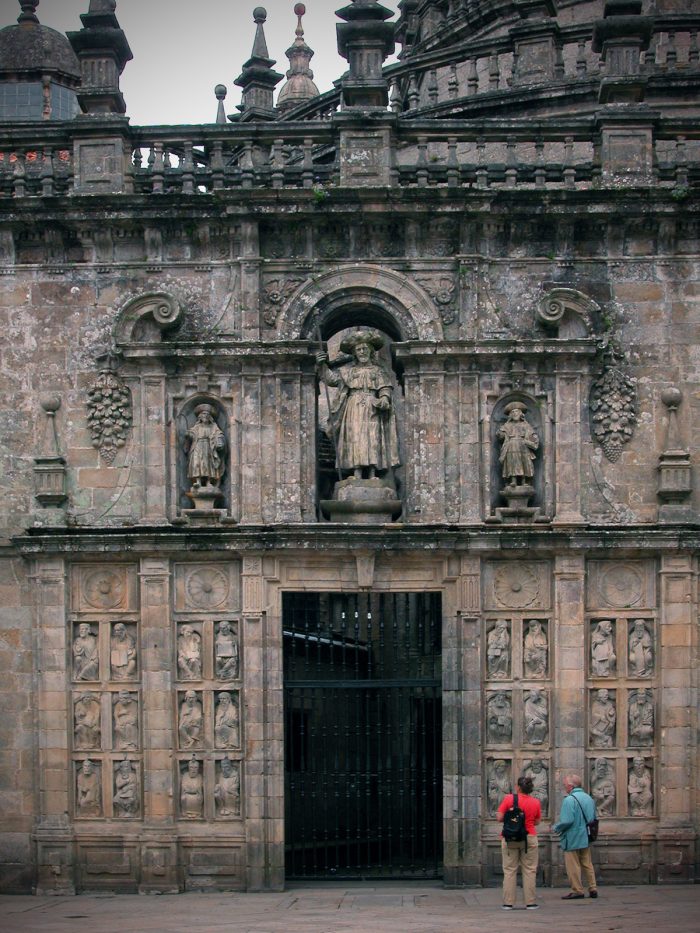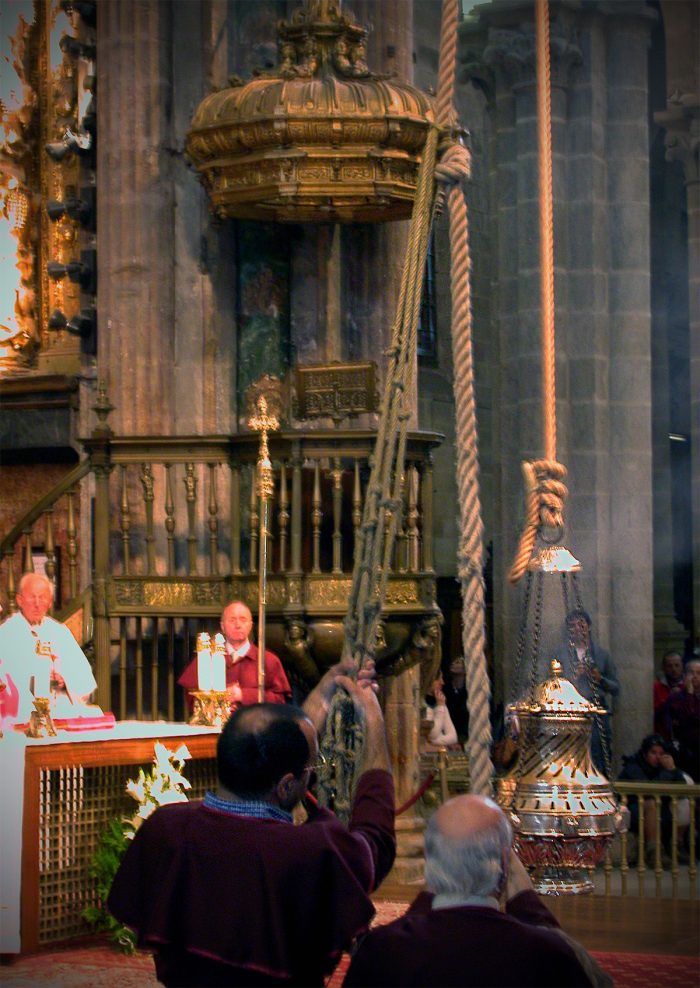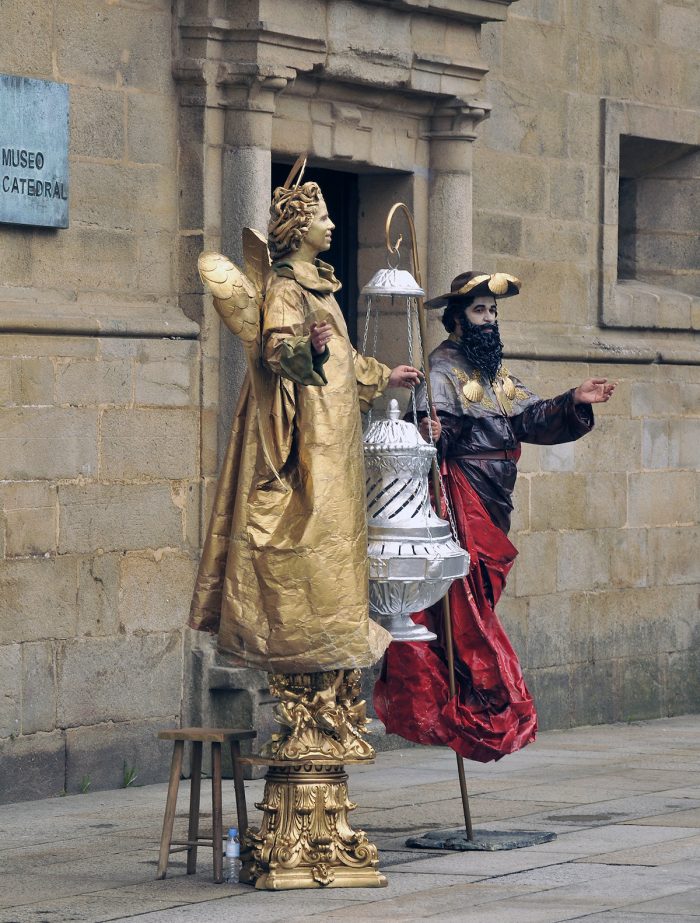Santiago de Compostela Cathedral in Spain
I never really thought I’d be able to pull it off – biking the 750 km. Camino pilgrimage route from Pamplona to Santiago de Compostela. Seeing the mountains to climb and the never-ending, twisting ribbon of asphalt roads as well as the stony dirt tracks where peregrinos walked with the patience of Job made my heart sink from Day 1. But somehow, with the aid of a Higher Calling, I was able to do it in 12 days which, for me, was nothing short of a miracle! So finding myself entering the Plaza Obraidoro right in front of the Cathedral drenched to the bone under a heavy downpour made me cry, partly out of tiredness and partly out of relief for accomplishing what I had set out to do.




The Camino de Santiago leads to the shrine of St. James in the Galician province of northern Spain and starts from various points in Europe, with the most popular one beginning from the town of St. Jean-Pied-de-Port in the foothills of the Pyrenees mountains at the French border.




Legend has it that the remains of St. James were carried in a boat to Spain and was buried in what is now the city of Santiago de Compostela. A shepherd saw the burial place under a field of stars (Campo de Estrellas), and when King Alphonso heard about it, he made a pilgrimage to the place and had the initial primitive church built on the spot. This was in the early 8th century, and soon, people started going there nonstop, growing in popularity over the centuries as thousands upon thousands of pilgrims made their way from different parts of the continent. A book, the Codex Calixtinus (shades of Lonely Planet!), was even published at that time to guide those who wanted to walk the whole route, giving tips on lodgings, food, places of interest to see; along the way, and even scams!




The church was rebuilt several times, but the present Cathedral was constructed starting in 1075 in Romanesque style with additional expansion and other embellishments made in succeeding centuries. The current Baroque facade with its twin spires, however, was built in the 18th century.




A large Square (Obradoiro) serves as a place for pilgrims to congregate when they arrive, and you will see people meeting up, laughing, crying, singing, and playing music to celebrate the long and hard toil they experienced on the way to get to Santiago. When I was there the last time, there was an Irish band complete with bagpipes and kilts parading down the square to the cheers of the large-sized crowd who were waiting for the Mass to begin.




Most have walked, some have biked, and others had come on horseback – these are the ways to do the pilgrimage to claim your Compostela or Pilgrim’s Certificate attesting that you have done your duty. At least you should have walked 100 kms. Or biked 200 kms. as shown on the stamps of your Credencial (Pilgrim’s Passport) that you secure from the place you started from. Then you collect stamps from the churches, hotels, cafes, or ayutamientos along your route.

Every day at 12:00 noon, a Mass is held as a symbol of welcome to the exhausted pilgrims who have arrived. It is the highlight of the whole Camino experience.
Want more updates about other interesting cultural, heritage, and religious destinations in Europe? Follow #TeamOutofTown, on Facebook, Twitter, Instagram, Bloglovin, and Pinterest for more travel ideas.
Also read:
About the Author
Al P. Manlangit is a Filipino architect based in Kuwait who loves to travel and take photos everytime he gets the chance to do so. The genres that he explores are landscape, architecture, and street photography which come in handy wherever he goes. He blogs at designerq8.com, focusing on interesting places he visited with short stories to tell behind each frame.

